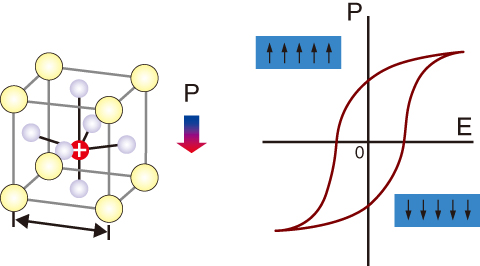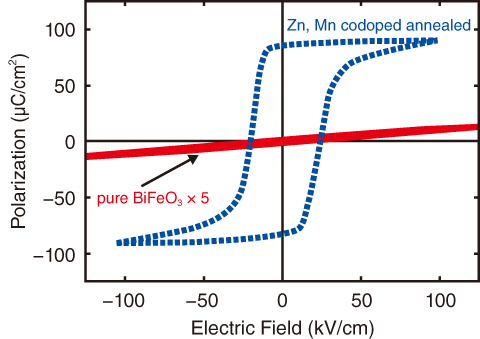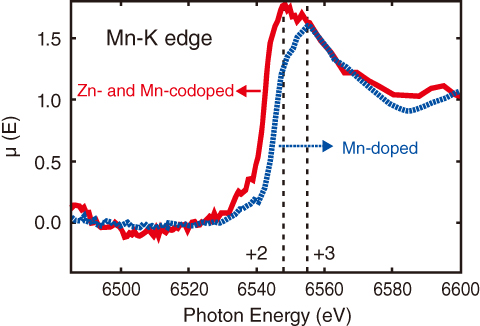
Fig.5-11 Hysteresis loop of ferroelectric material

Fig.5-12 D-E hysteresis loop of bismuth ferrite

Fig.5-13 XAFS spectra of doped Mn

Fig.5-14 Defect-induced polarization reversal
When a ferroelectric thin film is implanted with a small number of ions from the ion beam irradiation equipment, its ferroelectric property is often improved. However, as few ions can become embedded in a thin film, a detailed structural analysis is precluded, and the mechanism by which the ions improve the ferromagnetic properties cannot be clarified. However, ion implantation into bulk medium induces the same effect, allowing investigation of the doping effect.
Although bismuth ferrite (BiFeO3) exhibits small polarization, its ferroelectric property is dramatically improved by codoping with small quantities of zinc (Zn) and manganese (Mn). Figs.5-11 and 5-12 illustrate the polarization principle and the D-E hysteresis loop of BiFeO3, respectively. The coercive electric field of BiFeO3 is very large and spontaneous polarization is rare. However, spontaneous polarization is incited by codoping with Zn and Mn.
Here we investigated ferromagnetic improvement in BiFeO3 codoped with small quantities of Mn and Zn codoping. As the valence of Zn is stable, the investigation relies on the fluctuating valence of Mn. Moreover, local structure analysis is more suitable than conventional crystal structure analysis because the surrounding doped ions break the translational symmetry of the BiFeO3 structure. The X-ray absorption fine structure (XAFS) was then measured using beamline BL14B1 in SPring-8, which is dedicated to JAEA.
Fig.5-13 shows the results of the XAFS measurements. The Mn valence state in codoped BiFeO3 (+2) differs from that in Mn-doped BiFeO3. Because hetero-valence ion doping alters the structure of the bismuth sites, it induces polarization defects. These defects initiate domain reversal in the presence of an electric field. The polarization reversal induced by the defect, which improves the ferroelectric property of the codoped BiFeO3, is shown in Fig.5-14.
The present study was partly sponsored by the Ministry of Education, Culture, Sports, Science and Technology of Japan (MEXT) KAKENHI Grant-in-Aid for Scientific Research (C) (No.21560877).